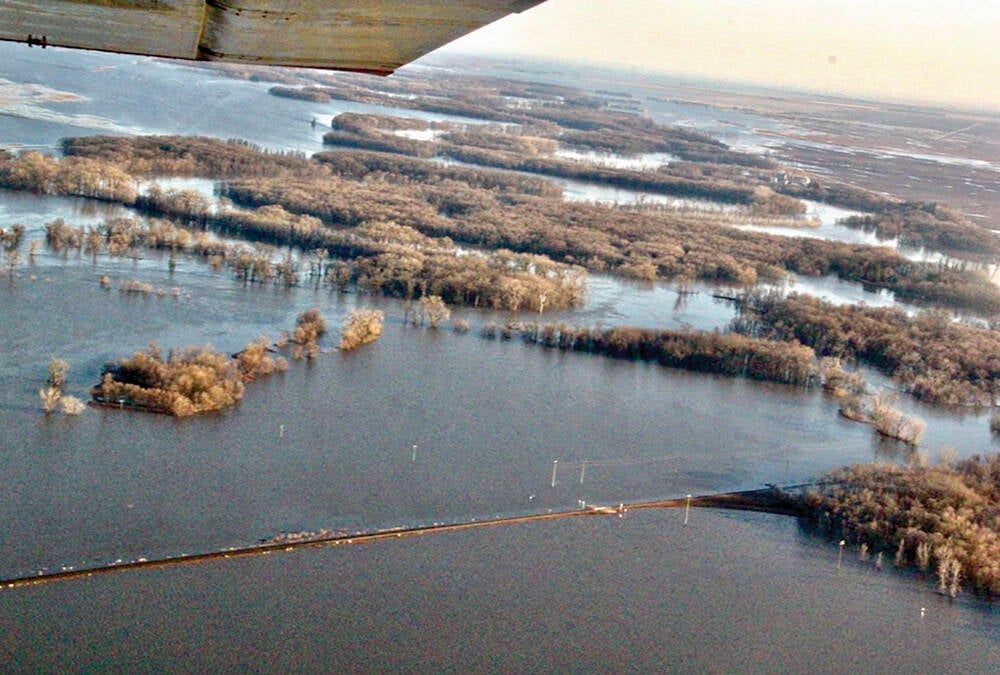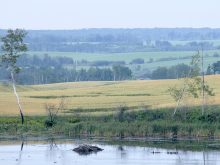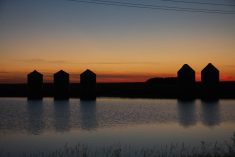SASKATOON — Sports has become the new cash cow for some rural schools.
In the past seven years, Alberta has gone to 80 sports academies from two. Half of these specialized schools are located in rural areas, said Daniel Balderson, an education professor at the University of Lethbridge.
The Notre Dame school in Wilcox, Sask., and its hockey team serve as the model, he told a session at the 17th National Congress on Rural Education in Canada March 26. For decades, the Hounds’ elite travelling team has been playing and the school charges a premium tuition for its instruction and opportunities.
Read Also

Rural Manitoba resources slim on natural disaster planning
A study from Brandon University’s Rural Development Institute has found that many rural and small municipalities don’t have the staff or resources to make formal climate plans against natural disaster.
The value of such elite sports schools shows up in the Olympic Games, said Balderson. From 2001-04, 82 percent of Germany’s Olympic medals were won by athletes who were students or graduates of sports schools. In 2006, only 10 percent of Canada’s Olympic team had attended or was enrolled in a sports school.
Most of Alberta’s academies are not the elite model, said Balderson. Such schools charge $14,000 to $35,000 a year per student, including room and board. The students are on the ice or the field five days a week, often travelling to games on weekends. They get special sports fundamentals courses, usually in the afternoon after academic courses in the morning.
Other sports schools teach their specialty after regular classes and students develop their skills in twice a week games. Tuition for these schools ranges from $800 to $1,500 a year.
Balderson said a typical elite type academy is in Warner, Alta. A decade ago, its population was 383 and residents feared the school would close. They came up with the idea for a women’s hockey school that in its inaugural year in 2003 brought in 20 girls. Since then, 84 players have graduated from Warner, 76 of whom went on to play on post-secondary teams. Those alumni were awarded a total of $1.3 million in scholarships.
The program costs $30,000 per year, which includes residence in a converted church, a coach who played seven seasons in the NHL and weekend travel to games.
The Vauxhall Academy of Baseball is one of five in Alberta specializing in this sport. It recruits from across Canada with 13 of its 56 sports students this year coming from outside the province.
Enrolment was the major impetus to forming the baseball school as Vauxhall’s high school slipped to 185 by 2008 from 250 students in 2005. The school has since been able to add a new teacher in each of the past three years.
Balderson said the Vauxhall sports students play about 50 games a year and practise in winter inside the town’s recreation centre, with a batting cage. Lights were added to the outdoor field, which is as good as any in major cities, said Balderson.
“It’s like a field of dreams.”
All baseball students in Vauxhall must volunteer in the community.
Most of Alberta’s academies are in hockey, baseball and golf, but there is one for lacrosse.
Rodeo is the focus of the Westwind Equine Academy in Cardston, Alta. It began with a donation of land and $1million from two bachelor brother ranchers who wanted to leave a legacy for their community.
It started as an elite program, but the program shifted when it couldn’t get course credits for its sport.
Rodeo lessons are held after class at the school, which also offers equine-assisted therapy for special needs kids and seniors.
Balderson said schools “compete with a lot of things, some of them aren’t that healthy for youth.”
Tuition-paying students allow schools to add course options that were lost, the community gains from new investment and teachers are inspired by new approaches.















